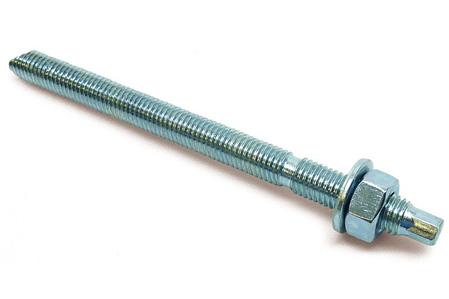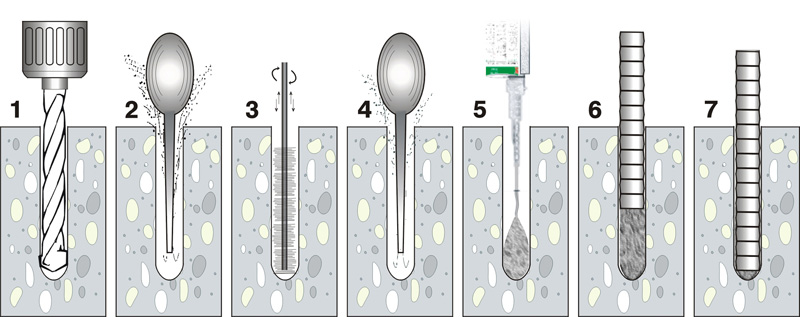

In some situations, using a traditional expanding plug, screw or anchor fixing in a breakable substance (concrete, brick or cement) can cause splitting or cracking. This is often the case towards the edge of the material and would therefore affect the strength, efficiency and ascetics of the substrate.
A Resin Anchor can beat this problem by being inserted into a pre-drilled hole towards the edge of the material. The Resin will then ‘cure’ around the fixing, thus creating the equivalent, sometimes stronger, pull or load bearing than a traditional fixing.

Sometimes, a section of studding or threaded bar can be inserted into the resin instead of a direct fixing, onto which fixtures can be bolted. However, it is important that care be taken when preparing the hole, so the resin anchor can provide maximum strength.

1. Cleaning the pre-drilled hole.
After the hole for the fixing has been drilled, it is important to remove any debris or dust. The nature of a chemical resin anchor will bond with the concrete or masonry inside the hole; however, if there is a layer of debris in the way, it will bond with this instead and become unstable.
2. Inject the resin.
Using an appropriate applicator gun, inject the resin into the pre-drilled hole. It is important to ensure that the nozzle width and length are correct and to slowly withdraw the nozzle, in order to avoid trapped air pockets.
3. Leave to cure
After twisting the threaded bar or stud into the hole, allow the resin a sufficient ‘cure time’ to provide maximum strength. This will vary according to the manufacturer so be sure to check the technical data sheets of the appropriate resins.